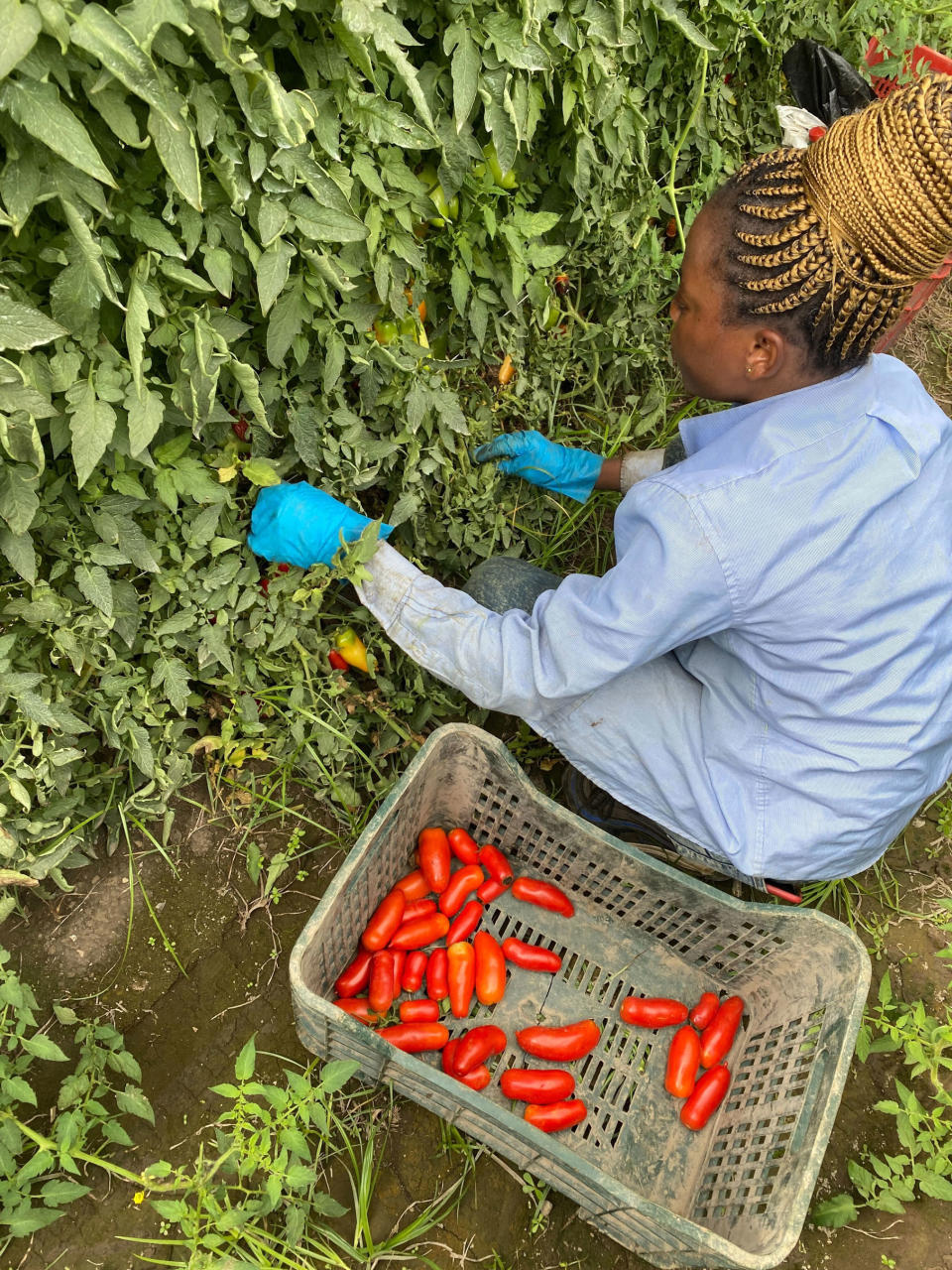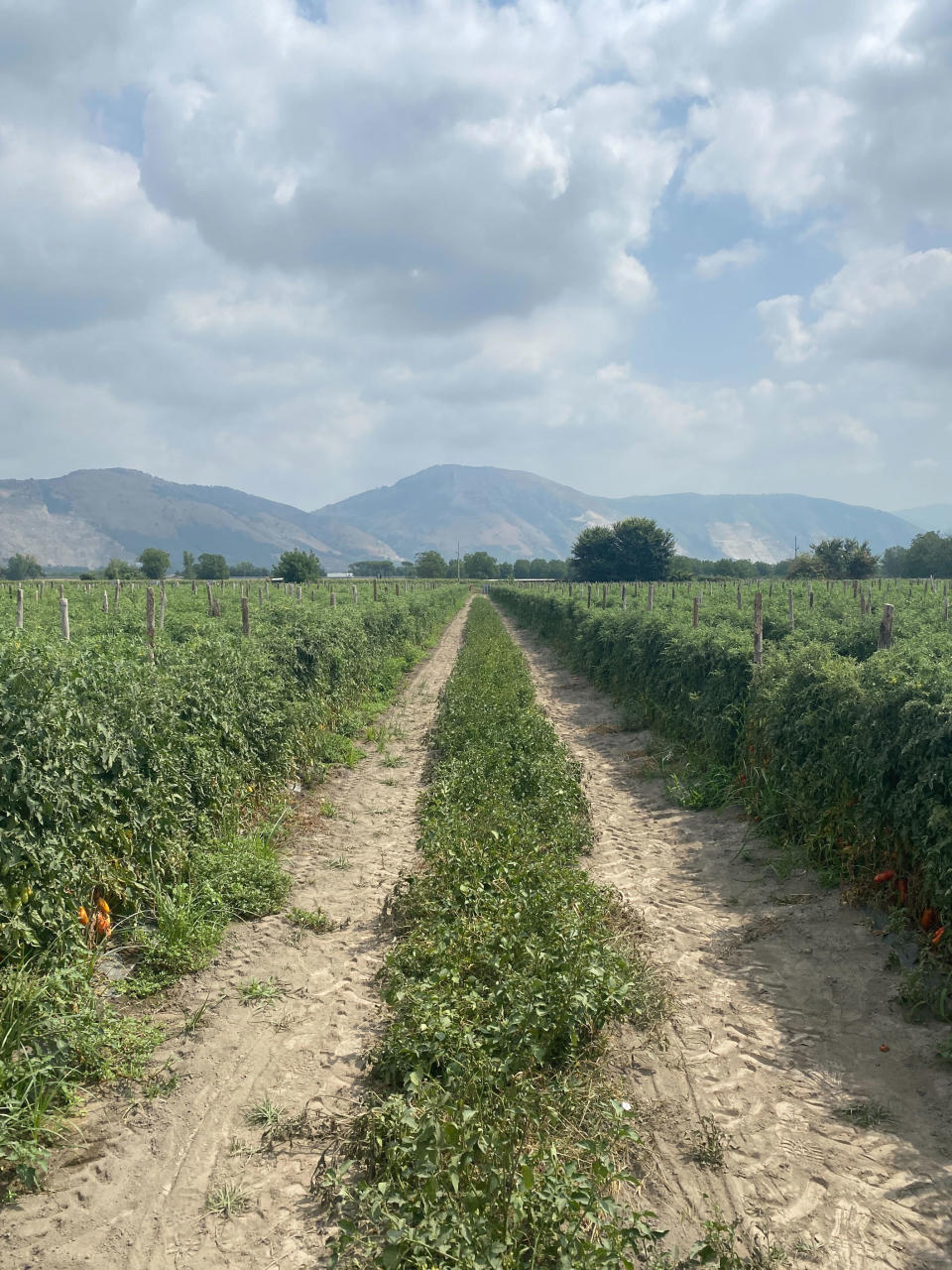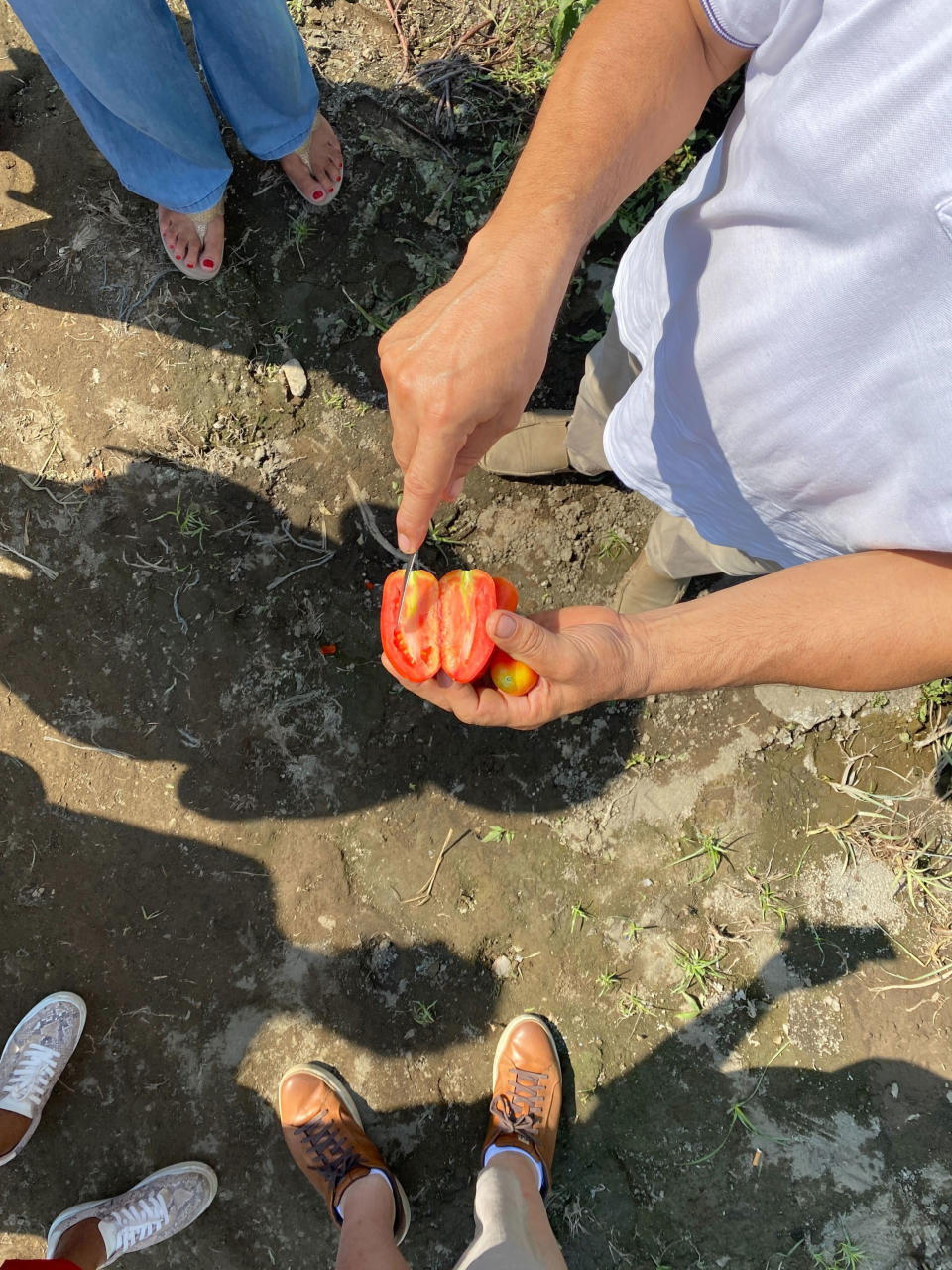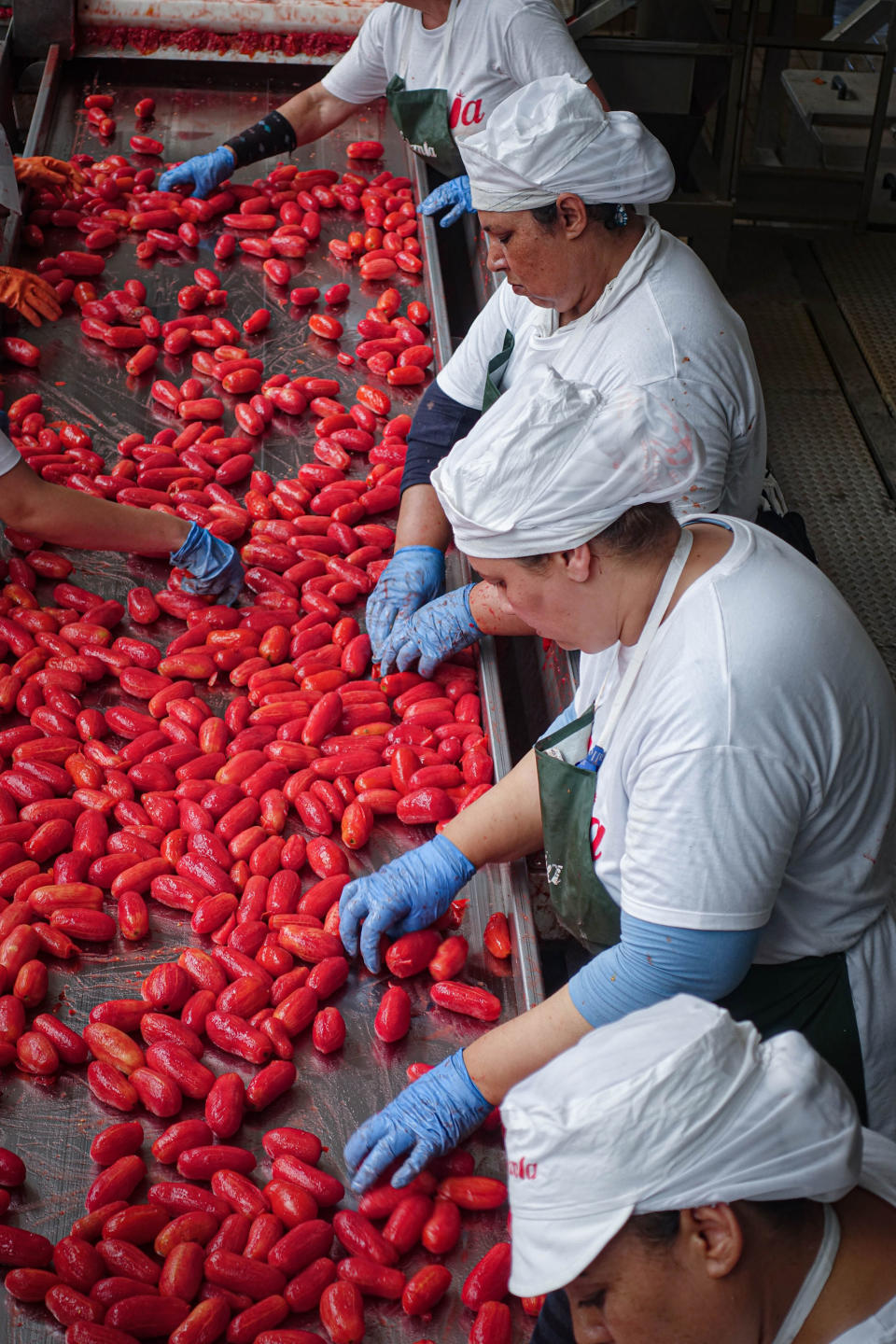What Are San Marzano Tomatoes Exactly?
This summer, I boarded a plane for Naples to learn all about one of Italy’s most famous products: the DOP San Marzano tomato. Even though I have been cooking with what are arguably the most famous tomatoes in the world, having the opportunity to stand in the middle of a tomato field in the shadow of Mount Vesuvius was a once-in-a-lifetime opportunity. I thought I knew everything there was to know about DOP San Marzano tomatoes, but boy was I off the mark.

What are DOP San Marzano tomatoes?
DOP San Marzano tomatoes are a special variety of tomato that grows in the Sarnese-Nocerino district in Campania, Italy, near Naples. Like any product labeled DOP (Denominazione d’Origine Protetta or Protected Designation of Origin), San Marzano tomatoes are cultivated in a specifically defined region. In the case of DOP San Marzano tomatoes, the area in which they are grown is regarded as sacred ground due to its perfect growing conditions: mineral rich volcanic soil, abundant water sources and constant relative humidity. All these factors contribute to the characteristics that make these tomatoes so special.

DOP San Marzano tomatoes are visually similar to Roma (plum) tomatoes but often narrower and with a pointed tip. When ripe, the skin is deep red, smooth and easy to peel — so easy that all it takes is a gentle waft of steam to remove it during the canning process. DOP San Marzano tomatoes have thick, firm walls with less seed pockets and less seeds, reduced moisture content and a more intense flavor. They are also less acidic and therefore more balanced than other tomatoes.
How do I spot fake San Marzano tomatoes?
While DOP San Marzano tomatoes are closely monitored and adhere to strict guidelines in Italy, farmers outside the country can grow San Marzano-style tomatoes (using the same or similar seeds) and label them as such. Fortunately, authentic DOP San Marzano tomatoes are easy to spot. No matter the brand, they are labeled with two certification markings as well as a serial number. Do not be tricked by wording such as “San Marzano-style” or “Italian peeled tomatoes.”

Where do I find them and why are they so expensive?
Due to their growing popularity, DOP San Marzano tomatoes can be found in many grocery stores and are also available through Amazon and other online retailers. You may notice that these tomatoes are more expensive (sometimes four times as much) than other canned tomatoes. Unlike some other canned tomatoes, DOP San Marzano tomatoes are highly seasonal and are only grown in open fields. They are planted in April and then harvested throughout the summer by hand by highly trained workers who pick them when perfectly ripened. The strict guidelines around the canning process also contribute to the heightened cost, which also involves manual labor. Lastly, these canned tomatoes are as pure as they come — no preservatives or filler ingredients are allowed to be added, only salt and, depending on the brand, fresh basil leaves.

When should I use them — and should I not?
You want to use DOP San Marzano tomatoes in recipes where the tomatoes are the star. In Italy, you’ll find them hand-crushed atop a Neapolitan pizza or gently broken up with the back of a spoon in a simple pomodoro sauce. The tomatoes are only cooked long enough to soften, just mere minutes.
One of the biggest takeaways for me was that you should never puree or blend the tomatoes. According to one of the factory owners, the fibers in the walls of the tomatoes should be left intact so the tomatoes maintain their “fresh” flavor.
Now, with that said, you’ll find me pureeing my DOP San Marzano tomatoes when making my Everyday Tomato Sauce or Bolognese. As long as the tomato is a prominent flavor, I’ll be using it.
For recipes that call for canned tomatoes where the flavor is masked by spices or other strong ingredients (think chilis and curries, etc.), feel free to save a few bucks and use standard canned tomatoes. However, individuals who are sensitive to acidic foods may still consider using DOP San Marzano tomatoes.
Cavatelli with Almost-Instant Tomato Sauce
While in Naples, I took a cooking class with the head chef of Pulcinella, a restaurant named after the famed Neapolitan mask. After heading downstairs into the cramped kitchen, he cracked open a can of DOP San Marzano tomatoes and taught me how to make this simple but flavorful sauce.
This sauce is all about the tomatoes, and it is very heavy on the sauce, which is meant to be mopped up with some good bread after you finish the pasta.
Cavatelli with Pulcinella's Almost-Instant Tomato Sauce by Anthony Contrino
This article was originally published on TODAY.com

